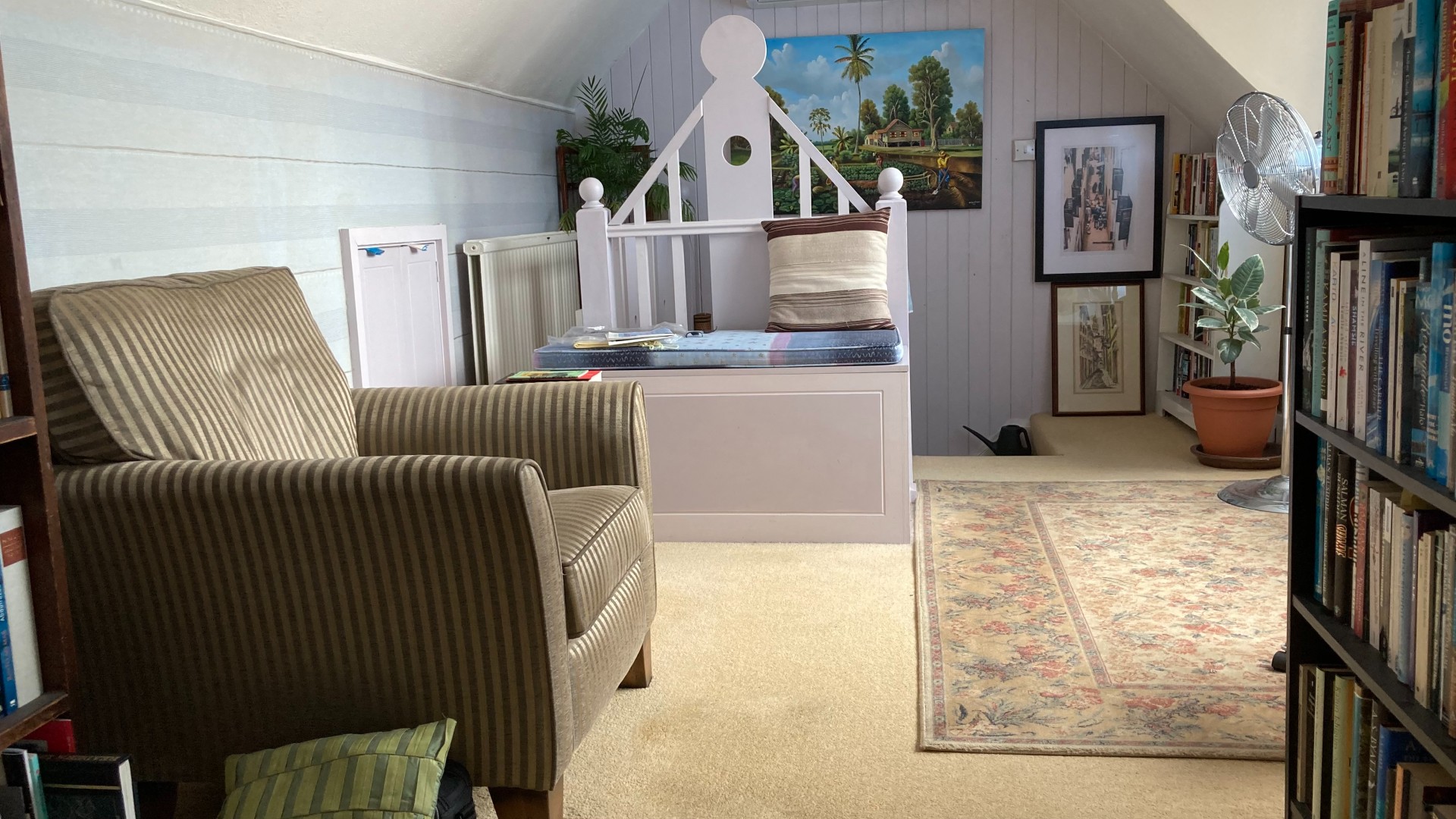
It is an attic room
It’s an attic room. Its dormer windows face west and take up the whole outside wall. In the morning the sun is over the shoulder of the house and the light in the room is mellow and green. From the desk the view is of the tops of trees, missing out most of the roofs below the eyeline.
Objects share space with books on the bookshelves: an exquisite vase and a silver charm to ward off the evil eye, both gifts from a friend in Istanbul, a pottery vase which was the first and only thing my daughter made out of an evening class pottery course, a glazed plate with an image of a leaping blue gazelle, another gift from a friend in Ankara, where the gazelle is an ancient symbol.
Images surround me on the remaining walls, paintings of a garden in Guyana, street scenes from Zanzibar, a tile inspired by the Alhambra, another street scene from Florence. Whenever I look at them, not methodically or deliberately, but as the eye roves about in its dithering way, a spasm of memory registers. So I remember the gallery where I bought the Zanzibar street scenes, which was in the old Customs House, how much I paid, the young woman assistant who sold them to me.
The other images are photographs, of people who are dear to me but are now far away because of distance or passing on, of people who are still nearby, children and grandchildren. They are memorable in a different way, somehow confirming the narrative I am part of.
One photograph is of a palace in the ruined town of Gedi. The ruins are located north of Mombasa between Malindi and Takaungu. These are names which are part of the stories of people who live on the coast, as I had done as a youth. The story of Gedi was that the town was inexplicably abandoned in the sixteenth century CE because of shortage of water although that seemed unlikely from the fecund vegetation which surrounded the site.
Gedi is in Waitamu. Before Waitamu grew into a mass-tourist resort, it was where settler Europeans from the Kenya Highlands came to take their vacations by the sea. It was also a station for deep sea fishing, which like shooting down big wild animals was a European sport. One of its enthusiasts was Ernest Hemingway, after whom a hotel is named and whose bar has several photographs of the macho man with his prizes.
On that first visit I walked from my hotel to the ruins. I was told it would take 15 minutes but it took longer than that. The ruins are off the main road, and through a village. As I walked through the village, children followed me, chanting Johnie Walker. It must have been because I was striding like the man on the whiskey bottle. They would have known about Johnie Walker not because they were familiar with the whiskey but because old bottles were recycled to hold anything from water, honey, kerosene, whatever.
I wandered the ruins unaccompanied. By the time I reached the palace, it was past mid-day, and I stood under the shade of a nearby tree and took the photograph. As I glance at it now, something of that trip, that moment in the ruins comes back.
In the afternoon, the sun swings round to the other side of the house and the room gradually becomes unbearable. Despite blinds and fans, by three oclock I have to abandon the computer and retreat to another room where it is cooler.
Abdulrazak Gurnah is a novelist, and Professor Emeritus of English and Postcolonial Literatures at the University of Kent.
Website: https://www.bloomsbury.com/author/abdulrazak-gurnah/